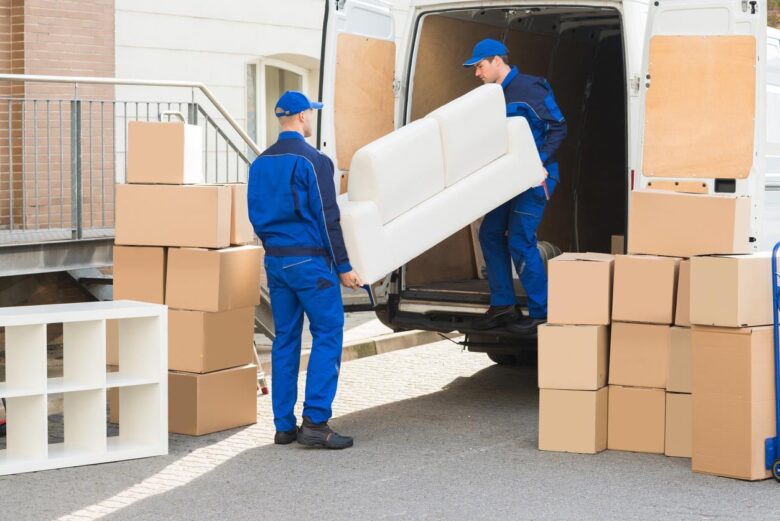Moving homes can be overwhelming and chaotic, leaving you feeling scattered and stressed. But there are strategies to stay organized throughout your move: from packing to unpacking, you can use these techniques to keep on track. You don’t need to feel overwhelmed – with careful planning and preparation, your move can be a breeze!
Contents
Preparing for the Move: Making a Plan
Before you even begin the packing process, it can be beneficial to sit down and create a plan. This will help you stay organized and keep your move on track. When preparing for a move, there are many important factors to consider such as creating lists, preparing supplies, and determining timelines.

Source: bilingua.io
Creating Lists
Writing down your belonging and making a comprehensive list of items that need packing can be incredibly helpful long term. Lists are an invaluable tool when relocating since they ensure nothing is forgotten and helps ensure everything is taken care of in a timely manner.
Preparing Supplies
To ensure the best possible moving experience for you, take time to determine what supplies will be necessary for the move such as boxes with dispensable tape, labels, markers, and bubble wrap for fragile items like dishes or glassware. Additionally, pack a first-night bag with essential items like toiletries so that you’re unpacking in an orderly fashion until everything has found its place again in your new home.
Determining Timelines
Break down any tasks that need to be accomplished into different smaller tasks for each day prior to the move and make sure there is plenty of time dedicated to packing throughout this timeline. Additionally, designating which rooms get packed first and during what timeframe can add another level of organization so that nothing is forgotten or neglected during the whole process.

Source: wrike.com
Decluttering and Downsizing Before Moving
Decluttering and downsizing before moving is a smart step to take to make the move as easy and stress-free as possible. Before beginning the preparation process, create a plan of action that designates tasks for each day. This will help keep you on track, organized, and focused on implanting your plan.
Start by making three piles: one for items you want to keep, another for those you want to donate, and the last for items that need to be thrown away. As you go through your items and organize them into piles, remember that less is more! If it isn’t something you need or use regularly, consider donating or discarding it instead of bringing extra clutter into your new home. Additionally, get rid of any furniture pieces that take up too much room or have seen better days – chances are someone else may find better use of these things than you can in their new home!
Prioritize packing one room at a time starting with seldom used rooms first so items needed until the last minute can stay readily accessible yet packed away in priority sections. This way when it comes time to move out all the large furniture can be hastily moved without taking too much time looking for particular kitchen gadgets or bedroom decorations scattered about the house due to unpacking haste during the move-in day!
Hiring a Moving Company
Hiring a moving company to help you with your move can be a key factor in ensuring an organized process. Be sure to check references from previous customers when looking for movers and always read the fine print of any contract before signing.
It’s important to consider the type of services you will need and make sure they are provided by the moving company. For example, some companies offer packing and unpacking services, while others may specialize in local or long-distance moves or have specific expertise in antique furniture handling or piano moving. Also, compare costs and consider insurance coverage if you choose to do the move.
Also consider whether you would prefer a full-service provider that handles every aspect of your relocation, or if it would be financially beneficial to hire certain tasks out separately. Research customer feedback online before deciding on a particular mover and remember, you always want to trust your family’s belongings with someone reliable who is experienced in their field and can guarantee safety during the transport process.

Source: bobvila.com
Unpacking and Settling In
Now that the moving boxes and furniture have been unpacked and placed, it’s time to settle in. A few tips to help ensure an organized home include:
- Immediately remove any cardboard boxes and other packaging materials from the premises. This can not only create a hazardous environment but can also lead to clutter piling up.
- Begin by unboxing items you’ll need right away, such as beds, couches, and any kitchen supplies for cooking meals the first few days after moving in.
- Next move on to essential items required for everyday living such as clothing and toiletries. This will help establish a sense of normalcy rather than diving ahead into constantly unpacking boxes filled with random items you might not even know what to do with yet.
- Use this time to familiarize yourself with the new layout of the property; get acquainted with which room connects with where or take some time off exploring where around outside if your new neighborhood or locality calls out to you at its best shot!
- Take frequent breaks throughout the process; instead of getting overwhelmed by attempts at making everything organized in one go – break them down into smaller chunks while focusing on one particular room after another until they are completed! This shall allocate sufficient rest time between hard-distanced workloads plus not fatigue our minds much too quickly!
Conclusion
Moving into a new home is an exciting experience, but it can also be very stressful. Staying organized during your move is key to making the process smoother and less overwhelming. By following these tips for staying organized, you’ll be able to stay on top of all the boxes and paperwork—and enjoy your new home as soon as possible. With careful preparation and organization, moving day will go from being chaotic to a breeze!
